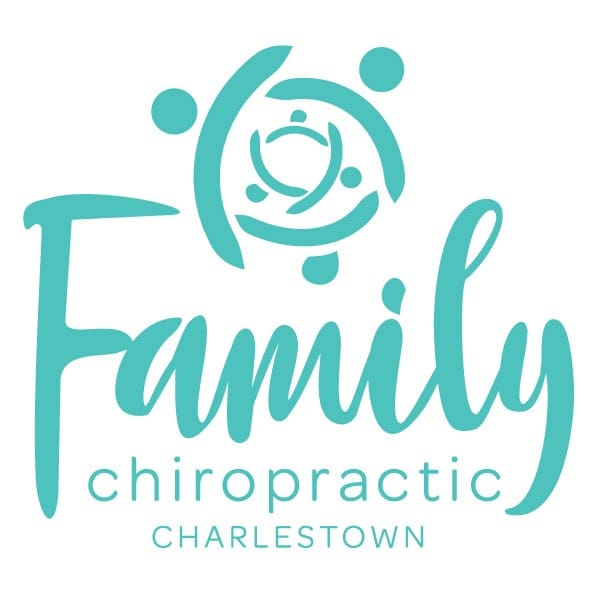Prenatal yoga with Sarah Newling
Sarah is a specialised yoga teacher and experienced birth doula. She offers weekly prenatal and postnatal yoga classes at Family Chiropractic Charlestown. Sarah speaks about how pregnancy yoga can be a form of birth preparation as well as a foundation for building your postpartum village. She holds quarterly mamas circles in our garden and provides postnatal yoga as an extension of community and support founded in pregnancy. Follow Sarah on instagram @sarah.yogimama or enquires through website www.yogimama.com.au
Pelvic floor health with Core Restore Co
| Heather Foord is passionate about educating women about the health of their pelvic floor. There is an important dynamic relationship between the abdominal muscles, our breath and the pelvic floor. She shares with us some valuable pointers on how we can strengthen these at home. Heather also explains the science behind some amazing equipment she has in her studio which can help improve incontinence and diastasis recti in just a few weeks. |
Doula support for the complicated birth with Jess Hastings
| Jess Hastings is an actuary risk analyst, and has been juggling and assessing risks for a living for many years. Since experiencing a challenging pregnancy and birth with her first child she has been passionate about helping other pregnant couples. Jess's strength is helping make sense of the information provided at this time, asking the right questions and making the best decisions for their situation. Jess can be found at www.motherlybirthservices.com.au and Motherly Birth Services on social media. |
Pregnancy and post partum massage with Joanne Macintosh
Joanne is a pregnancy and post-partum massage therapist, a doula and a yoga instructor. She combines these incredible skills into a wonderfully intuitive massage that help promote healing at both the physical and emotional level. In our conversation today Joanne shares how mums-to-be can heal old trauma through massage and self awareness, and help her new baby have the best start to life.
Joanne can be contacted here: https://joannemassagedoula.au/
Pilates for pregnancy and new mamas
We welcome Ellesse Hawkins from Fleur Pilates in Charlestown to the podcast. She is talking to us about preparing your body for the changing demands of pregnancy, birth and post-partum. Being pregnant and running after a toddler, Ellesse knows all about being busy. Even with that craziness she emphasizes the importance of squeezing in a bit of time for self care. She is an ex-ballerina with a background in Pilates and here provides some tips on how to strengthen the lower abdominals and pelvic floor.
Be sun smart for summer
Yippee, spring is here 😊! With the gorgeous weather and the unmentionable restrictions easing, everyone is so excited for the opportunity to play outside – on the beach, in the bush, in the garden - anywhere, as long as it is in the sun. Of course, with that lovely time outside we have to consider sun protection. Now, I know you know all about sunscreen. When, where, how much and all that. However, there are some important facts about WHAT that you may be interested to know.
A recent FDA study by Matta (1) looked at human absorption of the active ingredients in sunscreen, such as avobenzone, oxybenzone, octocrylene, homosalate, octisalate, and octinoxate. 48 healthy adults applied different types of sunscreen to 75% of their body over 4 days – once the first day and 4 times per day the other 3 days.
Results: All participants showed plasma concentrations of those various chemicals exceeding FDA safe levels by many, many percent after just one application of sunscreen. The levels increased with each day of subsequent use. The chemicals were still detected on the skin and in the blood 21 days after application.
The study reiterated that there is no data in the literature on the effects to humans of exposure to these active ingredients in sunscreen. However, there is no scientific data showing the safety of the ingredients with regards to cancer and developmental and reproductive health, either. Many of the chemicals were on the market before FDA started researching the safety of chemicals and the sunscreen ones were grandfathered on to the safe list.
There are studies showing that octinoxate and oxybenzone have been detected in human breast milk. Oxybenzone and homosalate have been questioned in the literature for their role in endocrine activity. Oxybenzone has been linked to lower testosterone levels in adolescents, poor sperm quality in males and endometriosis in females (2). Interestingly, many holiday destinations are banning these sunscreens due to their damaging effects on sea life (3).
Matta’s study was done on adults. It is worth remembering that children have comparatively larger skin surface, faster metabolism and larger brains relative to body size. If there is a potential issue with these chemicals, our children are much more at risk.
Based on this and other studies, the FDA updated its classification of sunscreen ingredients in February 2019 (4). They stated that there was lack of evidence to designate 12 out the 16 sunscreen active ingredients as ‘generally recognized as safe and effective’ (GRASE). These 12 ingredients include oxybenzone, octinoxate, octisalate, octocrylene, homosalate and avobenzone. The only two sunscreen ingredients that can be said to be safe and effective are zinc oxide and titanium dioxide. Unfortunately for us these are mineral compounds which create a physical barrier on the skin, reflecting the UV rays away. These sunscreens are harder to apply, leave an opaque sticky film on the skin and are a pain to wash off. However, this may be a small price to pay for playing safe in the sun this summer.
1 - ‘Effect of Sunscreen Application on Plasma Concentration of Sunscreen Active Ingredients A Randomized Clinical Trial’ Murali K. Matta, JAMA. 2020;323(3):256-267. doi:10.1001/jama.2019.20747
2 - https://www.ewg.org/sunscreen/report/the-trouble-with-sunscreen-chemicals/
3 - https://phys.org/news/2019-03-beaches-sunscreens-coral-reefs.html
4 - https://www.fda.gov/media/124654/download
FF 21: Best Parenting Advice
To raise our children to be happy and successful is every parent's goal and dream. Deb Arthurs is an ex-teacher and educational board advisor and she is passionate about children's learning. On this podcast you will love to learn her ideas about creating thriving families. Her website 'Best Parenting Advice' is also a goldmine of free tips and tools to help you stay focused on what is important.
3 absolute essentials for any pregnancy
Pregnancy is something we have a special interest in at Family Chiropractic Charlestown.
It’s a time of great change in a Mum-to-be’s body and it can have a lifetime of influence on the health and wellbeing of the little person you’re eagerly waiting to meet.
It can also be a challenging time for many women. There’s a lot of information to process and decisions to be made. It’s not uncommon to feel overwhelmed - but that’s why we’re here.
We want the best start to your parenting journey for you and your baby - and an easier pregnancy is a great place to start.
There are lots of ways to optimise your pregnancy. For each person, there will be different needs and requirements that will best be worked out with individual consultation - but there are three considerations we feel are essential for any pregnancy.
The best part? They’re generally quite easy to implement - so read on!
#1. Nutritional supplementation
This is something nearly every pregnant woman could benefit from during pregnancy and very often, into the postnatal period as well.
Morning sickness, cravings, and additional nutritional requirements means that it can be difficult to get the best standard of nutrition for the whole 40ish weeks of pregnancy and beyond.
However, to get the best support, it is often not as straightforward as taking a multivitamin. Each woman has different needs and considerations (e.g. hyperemesis, MTHFR) and some supplements are better than others.
#2. A great support team
A great support team is essential - and not just for your labour and delivery. A great support team is essential throughout your pregnancy.
Research has shown that continuity of care has been shown to bring about better birth outcomes. It’s important to take this into account when it comes to choosing the model of care to birth in.
Plus, it’s important to take this into account when it comes to choosing who supports you throughout your pregnancy.
#3. Movement
Good movement or exercise is an important part of everyday life, so it is no surprise that it can be the key to a better pregnancy. Not only can it make Mum-to-be feel more comfortable, but it has been linked with better delivery outcomes like shorter labour times.
Appropriate pregnancy-specific modifications will need to be made to your workout schedule, and of course, you want to feel comfortable and able when it comes to your exercise of choice - but that is something we can help you with and more if you choose it.
Starting or growing your family is one of the most exciting and daunting times of your life - and we are here to support you along the journey.
Our team is here to support you all the way through your pregnancy and beyond. Get in touch to make an appointment!
Image: Unsplash






